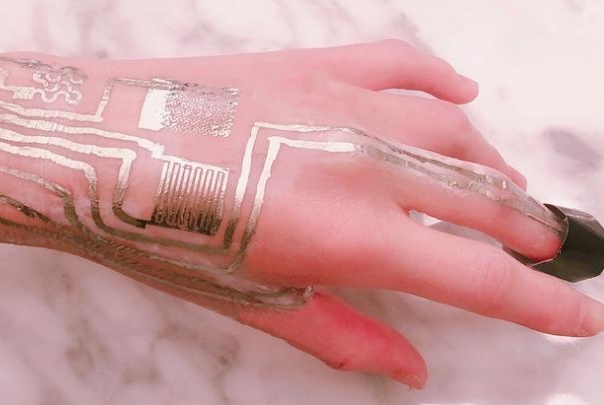Wearable sensors are growing in use among humans due to their precise biometric measurements and easy to wear from watches to devices. Now, Scientists successfully developed new wearables sensors that can be printed on human skin directly without burning the skin during the process.
A team led by Huanyu Cheng, Dorothy Quiggle Career Development Professor in the Penn State Department of Engineering Science and Mechanics, with the use of a novel sintering aid layer, developed direct printing for on-body sensors.
Typically, manufacturing wearable circuits with flexible sensors or devices requires a lot of heat. Now, scientists developed a method to fabricate them at room temperature in their study. With the new technology, it will be helpful to develop new medical sensors for medical patients with a much better fit and precision.
“A universal fabrication scheme to enable printing and room-temperature sintering of the metal nanoparticle on paper/fabric for FPCBs and directly on the human skin for on-body sensors with a novel sintering aid layer. Consisting of polyvinyl alcohol (PVA) paste and nano additives in the water, the sintering aid layer reduces the sintering temperature,” as described in the study published
“Together with the significantly decreased surface roughness, it allows for the integration of a submicron-thick conductive pattern with enhanced electromechanical performance. Various on-body sensors integrated with an FPCB to detect health conditions illustrate a system-level example,” the study added further.
Sintering aid layer
The same developed flexible printed circuit boards that can be used in wearable sensors. However, printing directly on hand had its complications among which the heat levels at which printing happens has been the main challenge.
The bonding process for metallic components in the sensor known as sintering typically happens at a temperature of around 300-degree celsius. Skin layer cannot withstand such high heat levels. The team proposed a sintering aid layer, which can protect skin and help the material sinter at lower temperatures.
“To get around this limitation, we proposed a sintering aid layer — something that would not hurt the skin and could help the material sinter together at a lower temperature,” said Huanyu Cheng to ScienceDaily.
How’s the layer made?
The sintering aid layer for generating room temperature consists of polyvinyl alcohol paste, peelable face masks ingredients, and calcium carbonate. The layer helps in reducing printing surface roughness and allows an ultrathin layer of a metal pattern. The patterns can be needed and folded while maintaining electromechanical capabilities.
Once the sensor is printed, researchers use an air blower like a hairdryer set on a cool mode to remove the water that was used as a solvent in the ink. “The outcome is profound, we don’t need to rely on heat to sinter,” Cheng said.
Environment friendly and removable
The device printed is environmentally friendly as it can be recycled claims the head scientist of the team. The sensor will stay on the hands during the use of tepid water, but a hot shower can remove it easily.
The removal of the sensor doesn’t damage the skin of people. This is very important considering the fact that many have sensitive skin like babies and elders. The team will now focus on altering the technology to target specific applications.
“It could be recycled since removal doesn’t damage the device,” “And, importantly, removal doesn’t damage the skin, either. The device can be useful without being an extra burden on the person using it or to the environment,” added Cheng.
Sensors have capabilities of precision and record temperature, humidity, blood oxygen levels, and heart performance. The new development of printing them on body as tattoos can help humanity especially during pandemics like the present one

